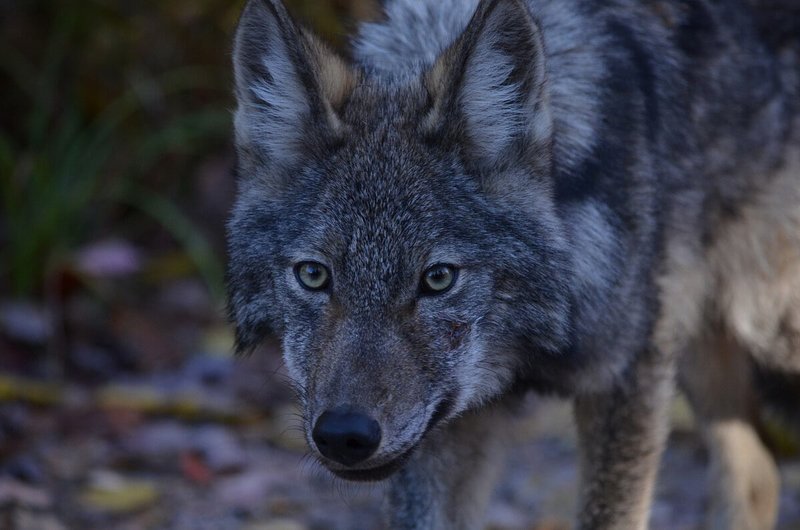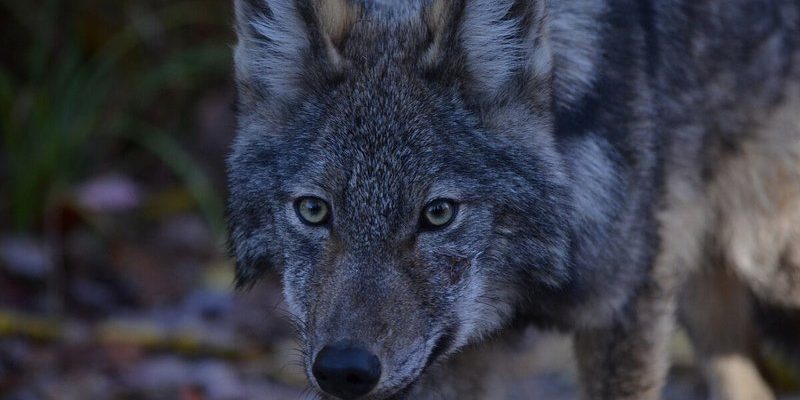
The Eastern Wolf is a fascinating creature that often gets overshadowed by its more famous relatives, like the gray wolf. Picture a majestic animal roaming the forests and wetlands of eastern North America, its howl echoing through the trees. With a blend of grace and strength, the Eastern Wolf plays an essential role in its ecosystem, yet remains shrouded in mystery for many. So, let’s dive into the world of this remarkable predator!
First off, you might be wondering what makes the Eastern Wolf unique compared to other wolf species. Well, it has a distinct appearance and behavioral traits that set it apart. These wolves are slightly smaller than gray wolves and boast a beautiful coat that can range from gray to reddish-brown. Their adaptability in various habitats is something to admire, too!
Physical Characteristics
The Eastern Wolf stands out with its elegant build and striking features. Adult Eastern Wolves typically weigh between 50 to 90 pounds, with some individuals reaching even heavier sizes. Their height at the shoulder can range from 24 to 32 inches. These wolves sport a thick, luxurious coat that helps them endure the harsh winters of their habitat.
The coloration varies, but it usually consists of a blend of gray, black, and brown fur, with reddish accents on the face and legs. Their long, bushy tails and sharp, intelligent eyes lend them an air of mystery. What you might find interesting is their vocalizations. Eastern Wolves are known for their distinct howling, which can be heard over long distances—it’s like nature’s own version of a concert!
Habitat and Range
When it comes to habitat, Eastern Wolves thrive in various environments, such as forests, wetlands, and even grasslands. Their range stretches across the northeastern parts of North America, from Ontario in Canada down to parts of New England and the Great Lakes region. They are quite adaptable, able to find shelter in dense woods or more open areas, depending on where prey is most abundant.
Interestingly, these wolves often prefer areas near water sources. The presence of lakes or rivers not only provides a drinking source but also supports the prey they hunt. Eastern Wolves primarily hunt deer, beaver, and sometimes smaller mammals, showcasing their ability to thrive in multiple ecosystems.
Social Structure
Eastern Wolves have a fascinating social structure that revolves around family units, often called packs. The pack typically consists of a breeding pair and their offspring, working together to hunt and raise young. This social behavior is crucial for their survival, as hunting in groups allows them to take down larger prey more effectively.
Within the pack, you’ll find a hierarchy, where the alpha male and female lead and make decisions for the group. This dynamic creates a supportive environment for the pups, ensuring they learn essential survival skills from an early age. You might even notice that they engage in playful behaviors, which not only strengthen their bonds but also help the younger wolves develop hunting techniques.
Diet and Hunting Behavior
Speaking of diet, the Eastern Wolf is primarily carnivorous, with a preference for larger prey like deer. However, they are opportunistic hunters, meaning they’ll also scavenge for smaller animals when needed. This flexible diet is vital for their survival, especially in times when preferred prey is scarce.
The hunting tactics of Eastern Wolves are quite intriguing. They often hunt in coordinated groups, using strategy to outmaneuver their prey. They rely on their acute senses of smell and hearing to track animals over great distances. Once they’ve pinpointed their target, they’ll work together, driving the animal toward other pack members. This teamwork is a remarkable example of their intelligence and social skills.
Conservation Status
Despite their adaptability, Eastern Wolves face significant threats. Habitat loss due to human expansion and agricultural development has heavily impacted their populations. Furthermore, hunting and trapping pose additional risks. The Eastern Wolf was once listed as endangered, but conservation efforts have helped stabilize some populations.
It’s important to support initiatives aimed at preserving their habitat and raising awareness about their plight. By understanding the importance of the Eastern Wolf and advocating for their conservation, we can help ensure that these magnificent animals continue to thrive in the wild.
Behavior and Communication
The behavior of Eastern Wolves is both complex and captivating. They’re known for their strong social bonds, often seen nuzzling each other and playing together. This behavior is not just for fun; it strengthens their family ties and keeps the pack united. Their communication is rich and varied, including growls, whines, and, of course, their iconic howls.
Howling serves multiple purposes, from marking territory to coordinating group movements. You might even say it’s their way of having a conversation across vast distances! In a way, howls blend the practical with the social, making them essential for both survival and maintaining relationships within the pack.
Reproduction and Lifespan
When it comes to reproduction, Eastern Wolves typically mate in late winter, with the female usually giving birth to a litter of 4 to 6 pups in the spring. The pups are born blind and deaf, relying entirely on their parents for nourishment and protection. Raising these young wolves is a communal effort, where both parents and older siblings help care for the pups.
The pups grow rapidly, developing their distinctive traits as they grow. By the time they reach 6 months, they’re already learning hunting skills and social interactions within the pack. In the wild, Eastern Wolves can live up to 6 to 8 years, though some have been known to live longer in protected environments. Their lifespan can be influenced by factors like food availability, habitat conditions, and threats from humans or other predators.
Interesting Facts
| Scientific Name: | Canis lycaon |
| Diet: | Carnivorous (primarily deer, beaver) |
| Weight: | 50 to 90 pounds |
| Height: | 24 to 32 inches |
| Lifespan: | 6 to 8 years in the wild |
| Average Litter Size: | 4 to 6 pups |
FAQ
What distinguishes the Eastern Wolf from the gray wolf?
The Eastern Wolf is generally smaller and has a different coat coloration compared to the gray wolf. While both species share some behavioral similarities, the Eastern Wolf has evolved traits that are specifically suited for its environment in northeastern North America. Its unique adaptations make it an entirely different species, albeit closely related.
Are Eastern Wolves social animals?
Yes, Eastern Wolves are very social creatures. They live in packs that consist of family units. This social structure is crucial for their hunting success and the raising of pups. Their interactions within the pack demonstrate strong bonds, as they engage in play, grooming, and coordinated hunting efforts.
What is the primary threat to the Eastern Wolf population?
The primary threats to the Eastern Wolf include habitat loss due to urbanization and agriculture, as well as hunting and trapping. Human activities have significantly reduced their natural habitats, which impacts their ability to find food and mate. Conservation efforts are ongoing to address these issues and protect their populations.
How do Eastern Wolves communicate?
Eastern Wolves use a variety of vocalizations, including howls, growls, and whines, to communicate with each other. Howling serves several purposes, such as marking territory and reuniting pack members after separation. Their vocal communication is essential for maintaining social bonds and coordinating hunting efforts.
What kind of habitat do Eastern Wolves prefer?
Eastern Wolves thrive in forests, wetlands, and grasslands. They are adaptable animals that prefer regions where prey is plentiful and water sources are available. Their ability to adjust to different habitats is crucial for their survival in a changing environment.
Do Eastern Wolves have any natural predators?
While adult Eastern Wolves are at the top of the food chain, they can occasionally fall victim to other large predators, such as bears or cougars, especially when they are stressed or injured. However, young pups are more vulnerable to a range of predators and must be protected fiercely by the pack.
How can I help in preserving Eastern Wolves?
There are several ways to support Eastern Wolf conservation. You can start by spreading awareness about their plight and supporting conservation organizations. Additionally, advocating for policies that protect their habitats and oppose hunting can make a difference. Volunteering for wildlife organizations is another effective way to contribute to their preservation.
What role do Eastern Wolves play in their ecosystem?
As apex predators, Eastern Wolves play a vital role in maintaining the balance of their ecosystem. By controlling deer populations, they help prevent overgrazing, which can lead to habitat degradation. Their hunting patterns create a ripple effect in the ecosystem, ensuring healthy populations of various species and promoting biodiversity.
Are Eastern Wolves solitary animals?
Unlike some wolf species that may exhibit solitary behavior, Eastern Wolves are known for their pack dynamics. While they can hunt alone if necessary, they thrive in groups that allow for effective hunting and stronger family ties. Pack living creates a supportive environment for raising young and surviving in the wild.
What is the conservation status of Eastern Wolves today?
The Eastern Wolf has faced significant threats and was once listed as endangered. However, ongoing conservation efforts have helped stabilize some populations. That said, they still require monitoring and protection to ensure their long-term survival in the wild.

